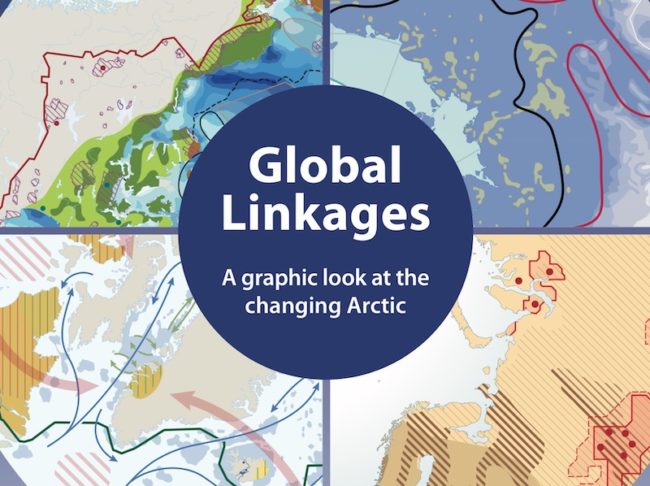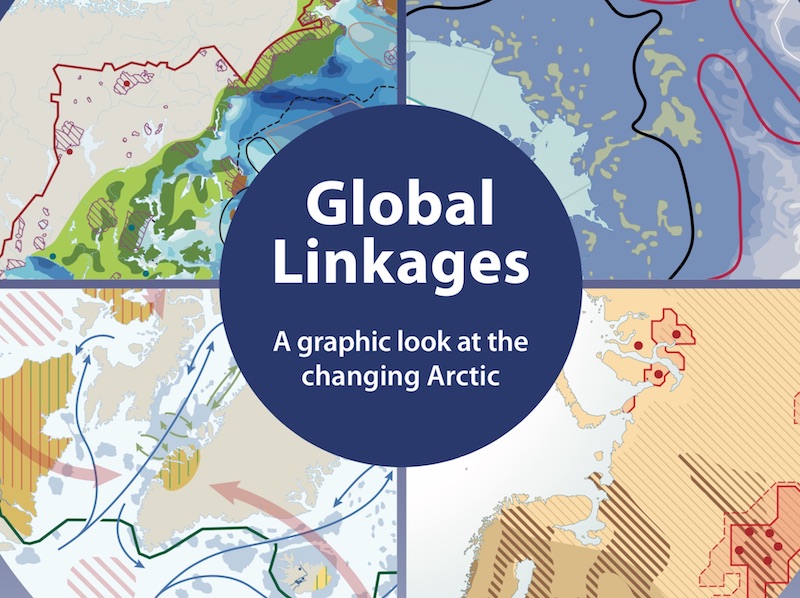
An assembly of the United Nations Environment Programme (UNEP) has been taking place in Kenya’s capital, Nairobi, this past week. Nairobi in fact hosts the global headquarters of the UNEP and is the regional seat for many UN agencies. This annual UNEP assembly gathers heads of state, ministers, business leaders and civil society representatives to work on ways to slash pollution and build a greener global economy. At this meeting a new report issued by the UNEP with a focus on the Arctic highlights the rather dire future that is now most or less certain.
Three Key Highlights
The first is the “Yikes!” moment …
- Even if Paris Agreement goals met, Arctic winter temperatures will increase 3-5°C by 2050 compared to 1986-2005 levels.
- Thawing permafrost could wake ‘sleeping giant’ of more greenhouse gases, potentially derailing global climate goals.
- Ocean acidification and pollution also posing major threats to Arctic
The Paris agreement has always been the goal, yet in reality even meeting even that is in doubt. The truly shocking item from this new report is the first item. Even if the world were to cut emissions in line with the Paris Agreement, winter temperatures in the Arctic will rise 3-5°C by 2050 and 5-9°C by 2080. This will not only be devastating for the Arctic region, it will also unleash sea level rises worldwide – and remember, this is the best-case scenario.
Worse! … How much worse?
I’m still on the highlights here, check out that second one. Rapidly thawing permafrost could accelerate climate change further and derail efforts to meet the Paris Agreement’s long-term goal of limiting the rise in global temperature to 2°C
And then there is the third item – ocean acidification and plastic pollution.
“What happens in the Arctic does not stay in the Arctic”
“What happens in the Arctic does not stay in the Arctic,” said Joyce Msuya, UN Environment’sActing Executive Director. “We have the science; now more urgent climate action is needed to steer away from tipping points that could be even worse for our planet than we first thought.”
Many live with the existing impact upon the region. Arctic societies now must respond to climate change even more through suitable adaptation actions. Arctic Indigenous Peoples already face increased food insecurity. By 2050, four million people, and around 70% of today’s Arctic infrastructure, will be threatened by thawing permafrost.
“The urgency to achieve the goals of the Paris Agreement is clearly manifested in the Arctic, because it is one of the most vulnerable and rapidly changing regions in the world,” said theFinnish Minister of the Environment, Energy and Housing, Kimmo Tiilikainen. “We need to make substantial near-term cuts in greenhouse gas emissions, black carbon and other so-called short- lived climate pollutants all over the world.”
The impacts globally would also be huge. From 1979 to the present, Arctic sea ice is estimated to have declined by 40%. Climate models predict that, at the current rate of CO2 emissions, Arctic summers will be ice-free by the 2030s. The melting of the Greenland ice cap and Arctic glaciers contribute to one third of sea level rise worldwide.
Even if the Paris Agreement is met, Arctic permafrost is expected to shrink 45% compared to today. Globally, these frozen soils hold an estimated 1,672 billion metric tonnes of carbon. Increased thawing is expected to contribute significantly to carbon dioxide and methane emissions. The resulting warming will in turn lead to more thawing – an effect known as ‘positive feedback’. This accelerated climate change could even throw the Paris Agreement’s 2°C goal off track.
Why is Ocean acidification and pollution a highlight?
Ocean acidification is disproportionately impacting Arctic marine species. This is because cold water can hold more dissolved CO2, while melting ice spreads the acidity further. Since the beginning of the industrial revolution, the world’s ocean has become 30% more acidic. The more acidic the water, the more energy Arctic corals, molluscs, sea urchins and plankton must use to build their shells and skeletons.
Despite its pristine image, the Arctic’s geographical characteristics and cold climate mean the region’s ocean, seafloor and coastline are a sink for contaminants from around the globe. Only 1,000 out of the 150,000 chemical substances in use worldwide are regularly monitored. A global approval system for new chemicals is therefore needed. Alternative controls are also seen as necessary for chemicals that fall outside of existing treaties.
Key Messages
It’s a long, detailed, and very comprehensive report. There is mush within it, and so I’ve only teased you with a very highlights. The actual substance of it all is far more detailed. The report itself presents key messages in three sub sections (Pages 48-49). As a fine word on this, I’ll reproduce it below …
Climate Change
- Many changes are already “locked-in” for the Arctic. In the years and decades to come, adaptation that integrates and respects local knowledge and Indigenous knowledge will be vital to help Arctic societies address the coming challenges.
- Global action is also needed to reduce CO2 emissions to avoid tipping points. These include the thawing of permafrost, which could release large amounts of carbon into the atmosphere and derail efforts to meet the long-term goal of the Paris Agreement on climate change. Other possible tipping points are related to increased fresh water input or ocean acidification, with direct impacts on ocean circulation and ecosystems.
- Longer-term efforts to transition to low-carbon economies, both in the Arctic and globally, must be complemented by instant measures to reduce SLCPs, including methane, tropospheric ozone and black carbon. Immediately controlling SLCPs across the world could cut the rate of warming in the Arctic by up to two-thirds by mid-century.
- Concerted efforts are also needed to ensure that governments around the world understand the very real implications of Arctic climate change for their own countries and act appropriately.
Pollution
- As new chemical contaminants find their way to the Arctic, the need to strengthen international mechanisms becomes even more pressing. This includes an improved global approval system for new chemicals and exploring alternative control actions for chemicals not covered by existing conventions.
- Many pollutants remain in the Arctic for long periods. Some accumulate and build-up in the food chain, posing a health risk to people, animals and ecosystems.
- Tackling pollution both in the Arctic and globally has clear benefits for human health.
- The Arctic acts as a sink for chemicals and heavy metals and emerging evidence shows that the Arctic Ocean, its coastline and sea floor also act as a sink for plastics from around the world as well as from Arctic sources. Concerted regional and global action, with the participation of Arctic countries and stakeholders, is needed to manage the problem of plastic pollution.
- Increased understanding of the global effects of environmental change in the Arctic and the ways these changes affect ecosystems and the people who depend on them creates an opportunity for the harmonization and rationalization of multi-contaminant monitoring programmes.
Biodiversity
- International coordination and action outside the Arctic, including through the Convention on Migratory Species, to limit or stop overharvesting and habitat degradation in critical staging or wintering grounds is crucial for the conservation of Arctic migratory species.
- Future ocean acidification will likely mean changes in Arctic organisms and ecosystems reach a scale that will affect human societies.
- Early warning and further research and understanding is needed to adequately prepare for and prevent the spread of new, climate-sensitive zoonotic diseases in the Arctic.
- The risk of new invasive species both on land and at sea is also likely to rise in the future. This will require coordinated national and international action, including the measures outlined in documents such as the Arctic Invasive Alien Species Strategy and Action Plan.
- Arctic marine conservation is not always well prepared for all environmental changes as protected areas do not always cover biodiversity and ecological hotspots.
- To adapt to the coming changes, Arctic protected areas and networks on land and at sea will need to be flexible and adaptable to remain effective at conserving biodiversity. An example of this is being able to accommodate changes in species and ecosystem ranges as a result of climate change. Indigenous Peoples and other local communities must be involved in the creation, control and governance of protected and conserved areas to ensure fair and sustainable management of ecosystems and resilient local livelihoods, as outlined in Aichi Biodiversity Target 11.
Further Reading
- Guardian (13th March 2019): Sharp rise in Arctic temperatures now inevitable – UN
- The report itself (58 page PDF)
